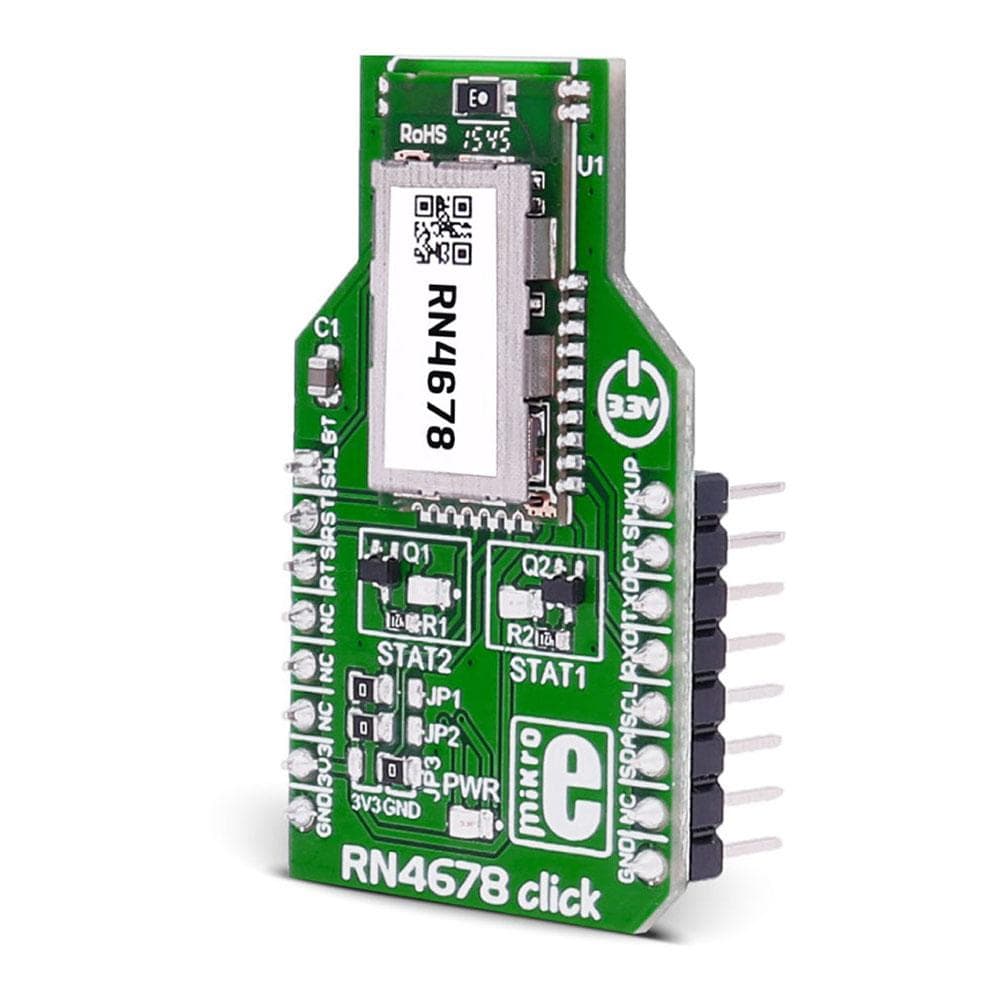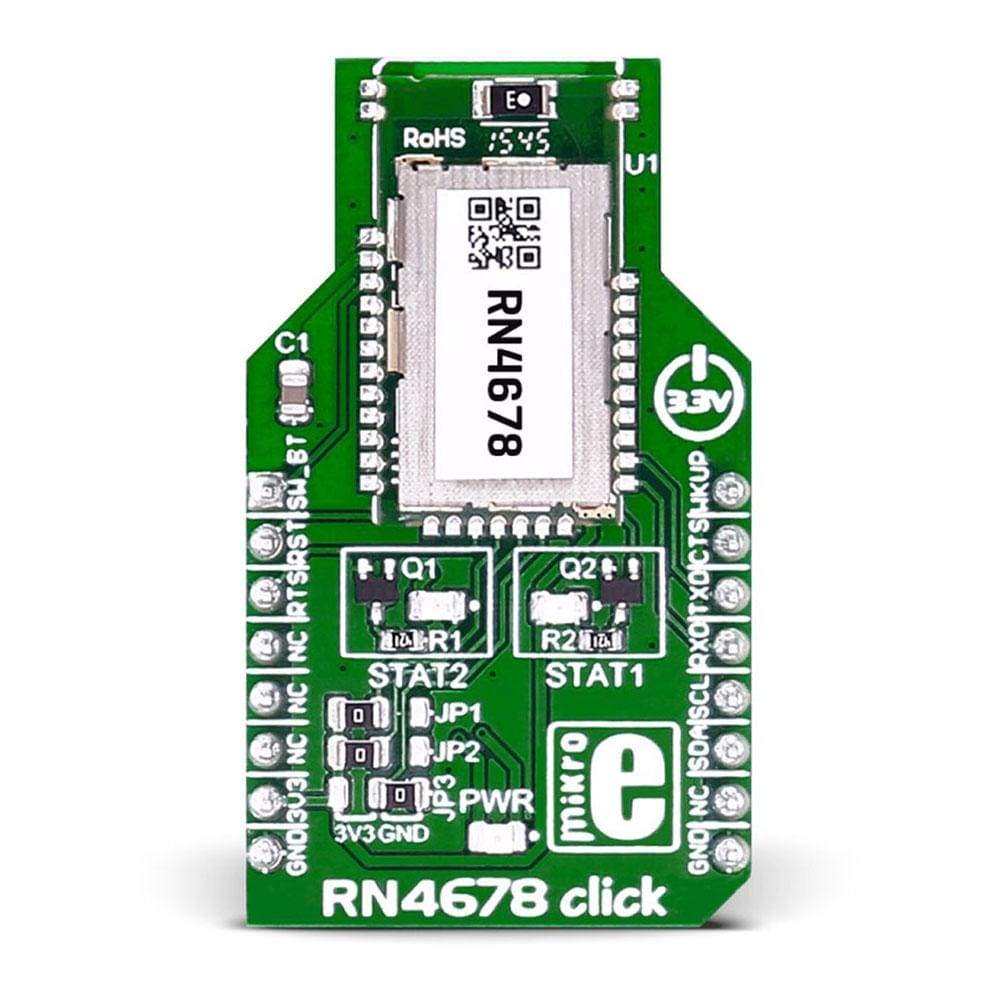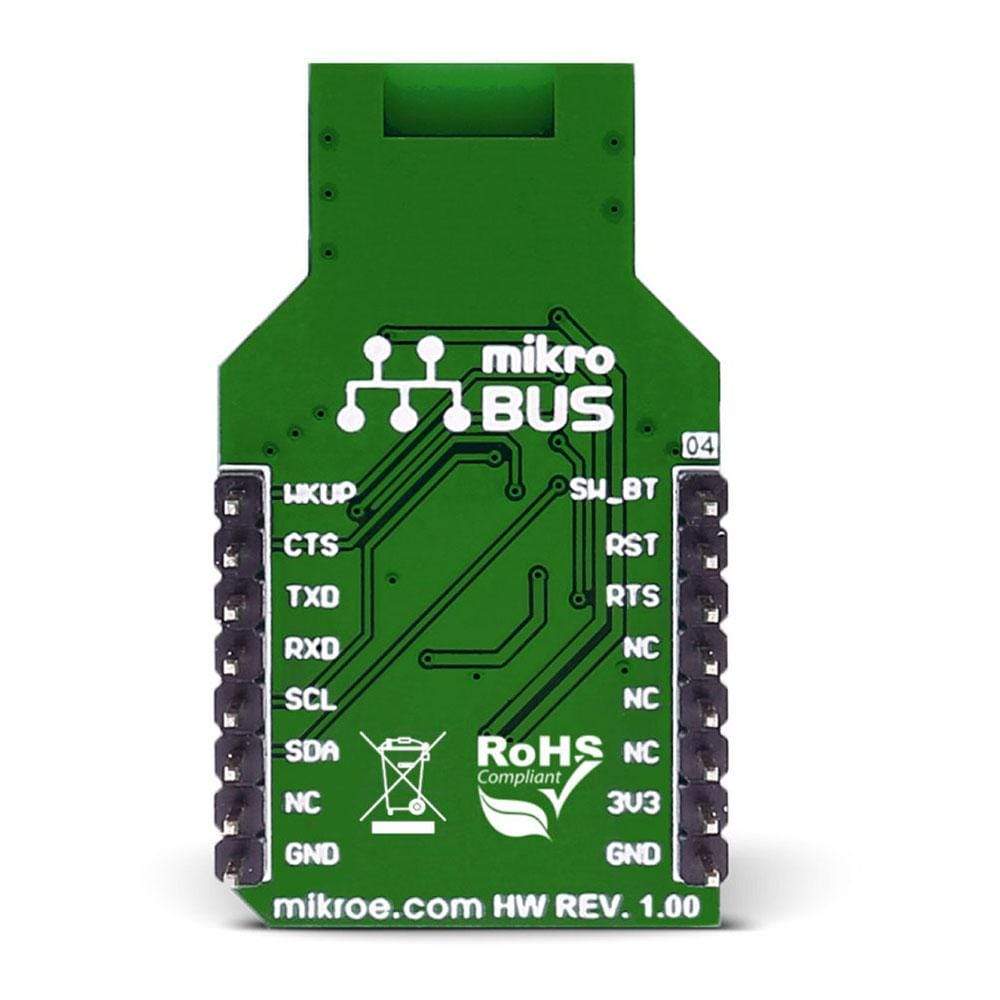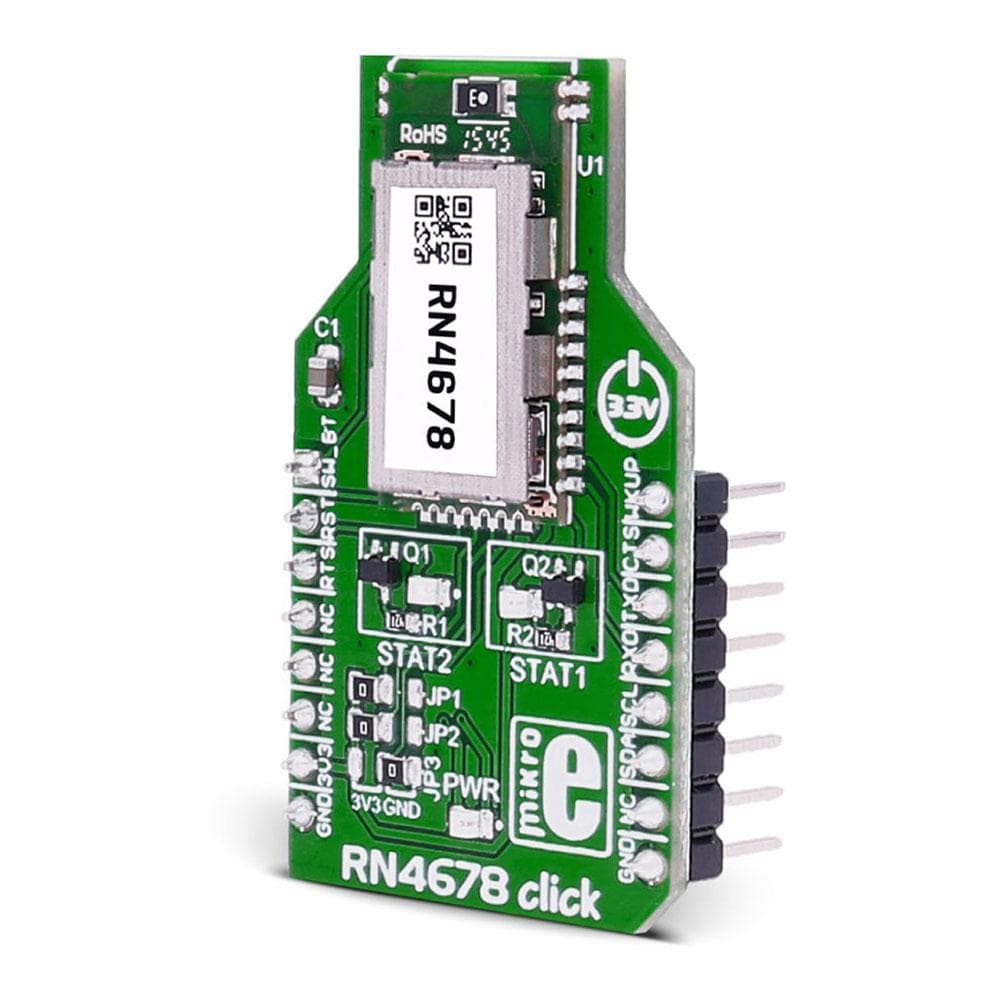
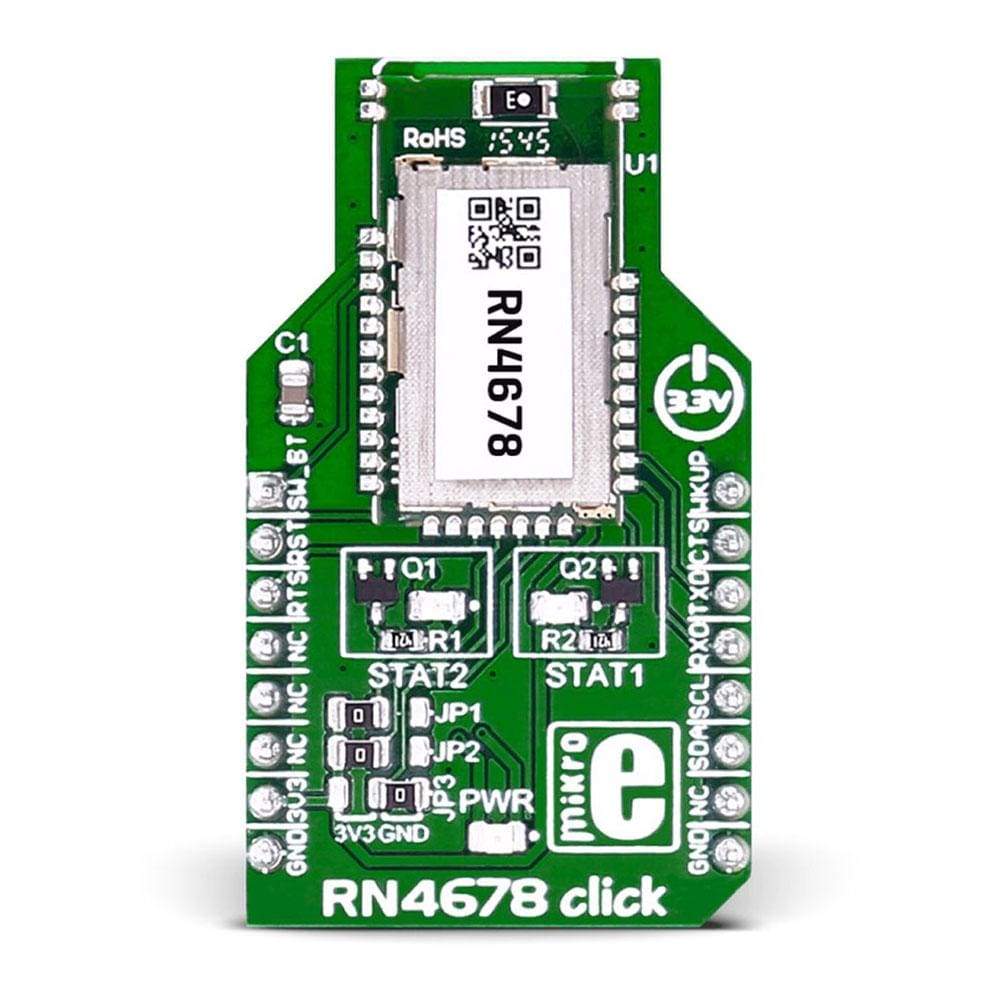
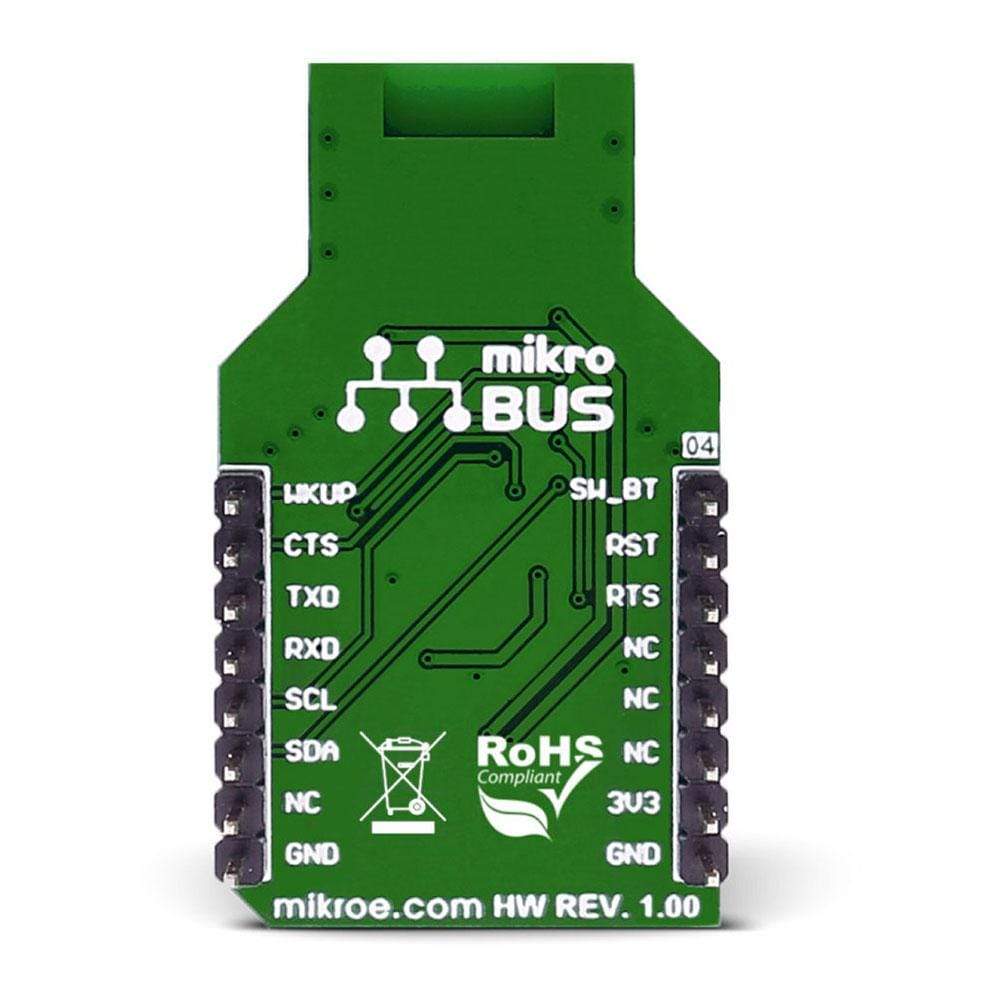
Overview
The RN4678 Click Board™ is based on Microchip's RN4678 Bluetooth® 4.2 dual mode module.
The RN4678 Click Board™ is designed to run on a 3.3V power supply. It communicates with the target microcontroller over I2C and UART interface, with additional functionality provided by the following pins on the mikroBUS™ line: AN, RST, CS, PWM, INT.
Downloads
Der RN4678 Click Board™ basiert auf dem RN4678 Bluetooth® 4.2 Dual-Mode-Modul von Microchip .
Das RN4678 Click Board™ ist für den Betrieb mit einer 3,3-V-Stromversorgung ausgelegt. Es kommuniziert mit dem Zielmikrocontroller über die I2C- und UART-Schnittstelle, wobei zusätzliche Funktionen durch die folgenden Pins auf der mikroBUS™-Leitung bereitgestellt werden: AN, RST, CS, PWM, INT.
| General Information | |
|---|---|
Part Number (SKU) |
MIKROE-2545
|
Manufacturer |
|
| Physical and Mechanical | |
Weight |
0.019 kg
|
| Other | |
Country of Origin |
|
HS Code Customs Tariff code
|
|
EAN |
8606018710423
|
Warranty |
|
Frequently Asked Questions
Have a Question?
Be the first to ask a question about this.

